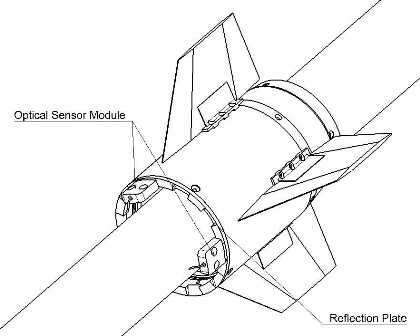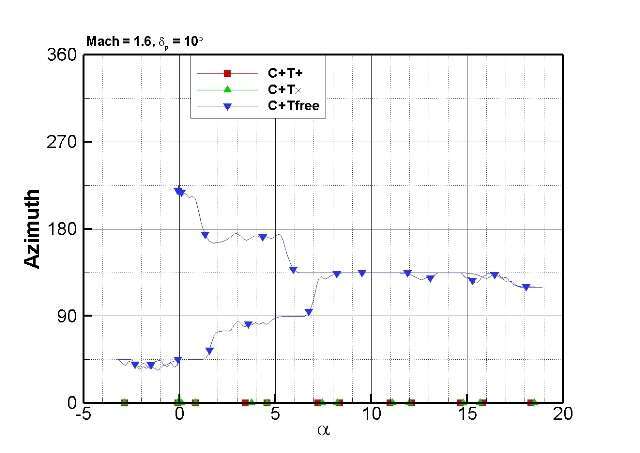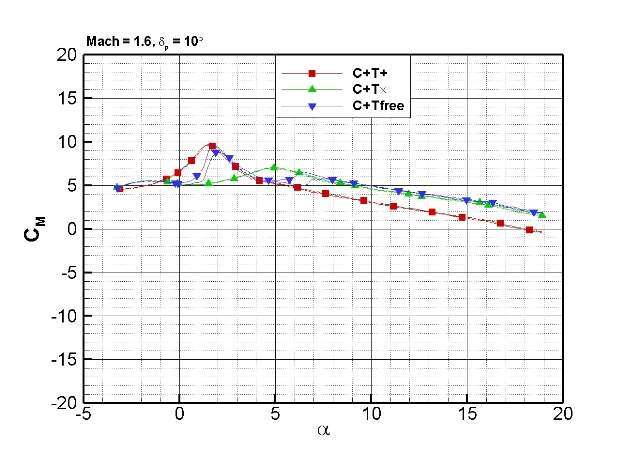It is well known that a canard-controlled missile has the problem of induced rolling moments at supersonic flow regime. The flows passed around canards interacts with tail _ns, thereby induced rolling moments can be generated on the tail fins for some canard conditions. These induced rolling moments can be reduced by the use of free-to-roll tail _ns. Recently experimental study with fixed and free-to-roll tail _ns has been carried out to investigate aerodynamic characteristics for a canard-controlled configuration with free-to-roll tail fins at supersonic Mach numbers. Present study deals with wind tunnel test results of revolution per minute, direction of revolution, and roll-lock phenomenon of free-to-roll tail fins. New developed system which measures the roll-lock azimuth angle of the free-to-roll fins was introduced. The wind tunnel tests were conducted 1.2 m by 1.2 m trisonic wind tunnel of Agency for Defense Development. Figure 1 shows the free-to-roll tail fins with a rotational measurement system for a rotating part. Two optical sensors are installed at a stationary part. Each optical sensor emits a laser and receives the laser reflected on a reflection plate.
On the reflection plate, normal and oblique sides for the direction of emitted laser are arranged as shown in the figure. The optical sensor receives the strong signal than a pre-determined threshold on the normal side and the weak signal on the oblique side.

Figure 1. Rotational measurement system for rotating part with oblique reflection plate.
Figure 2 shows the results of fixed and free-to-roll tail fins. When roll-lock occurs, the RPM becomes zero as shown in Figure 2-a.

(a) RPM

(b) azimuth angle of the tail fins

(c) pitching moment
Figure 2. Results of fixed and free-to-roll tail fins at Mach number of 1.6.
References
Blair, A. B., Jr., (1978) Wind-Tunnel Investigation at Supersonic Speeds of a Canard Controlled Missile With Fixed and Free-Rolling Tail Fins. NASA TP 1316

